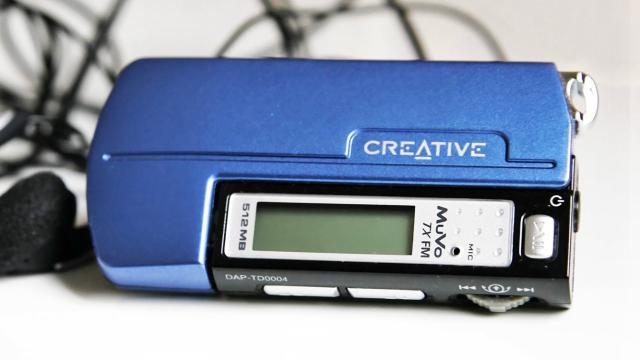Earlier this week, we discovered that Winamp, our media player of choice during the heyday of MP3s, is back from the dead and revitalized to run on modern Windows PCs. Whipping the llama’s arse again also got us feeling nostalgic for when our digital music collections first went mobile.
Unlike the (usually) homogenous smartphones of today, MP3 players came in all sorts of exotic shapes and sizes, with companies competing to introduce designs and features that made their players stand out in a very crowded market. But unlike Winamp, there’s little chance any of these devices are ever going to see a revival again. Our smartphones now handle all of our mobile media needs, so all we can do at this point is reminisce and wax nostalgic about the devices we formerly never left home without.
SaeHan Information Systems MPMan F10
Prototype devices capable of playing digital audio files have existed as far back as the late ‘70s, but the first MP3 Player, as these devices came to be known, arrived about three years after the MP3 codec itself did, in 1997. It was from a South Korean company called SaeHan Information Systems and was called the MPMan F10 when it officially went on sale in the Spring of 1998 in parts of Asia.
It was available in 32MB and 64MB capacities which meant that even the larger option could only hold about 12 songs, depending on their compression level and file sizes. It also synced to a PC using a dock over a parallel port connection that was excruciatingly slow, and when it arrived in North America later that year under the Eiger Labs branding, it cost the equivalent of $US250 ($347) — truly bleeding edge technology.
Diamond Multimedia Rio PMP300
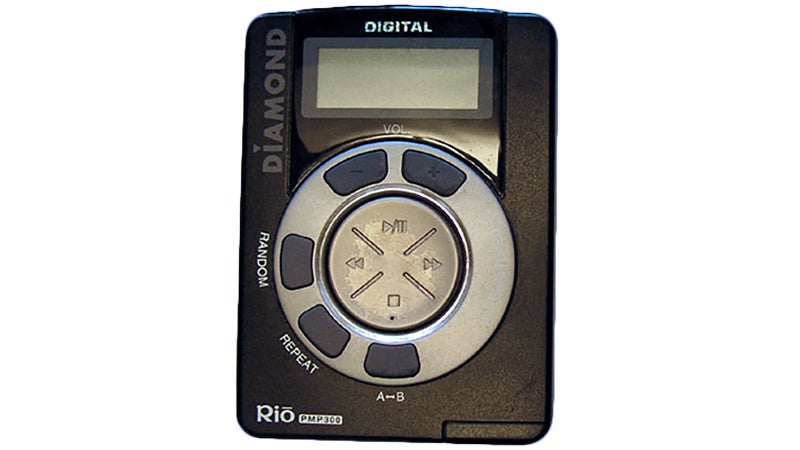
The MPMan F10 wasn’t exactly a runaway success, and there’s a good chance few were ever spotted in the wild here in North America. But in September of 1998, the first commercially successful MP3 player was released by Diamond Multimedia: the Rio PMP 300. This device also debuted a design that’s so memorable and iconic that even Apple didn’t stray far from it a few years later.
The original 32MB version of the Rio PMP 300 sold for the equivalent of over $US350 ($486), but unlike the MPMan, it included a SmartMedia slot, allowing its storage capacity to be increased, and it ran on a single AA battery that provided over 10 hours of playback. And although it was released well before most people knew what an MP3 was, the Rio PMP300 was the first MP3 player to ruffle the RIAA’s feathers, as the group actually filed for a temporary restraining order to prevent the device from being sold, which was eventually denied.
RCA Lyra RD2201
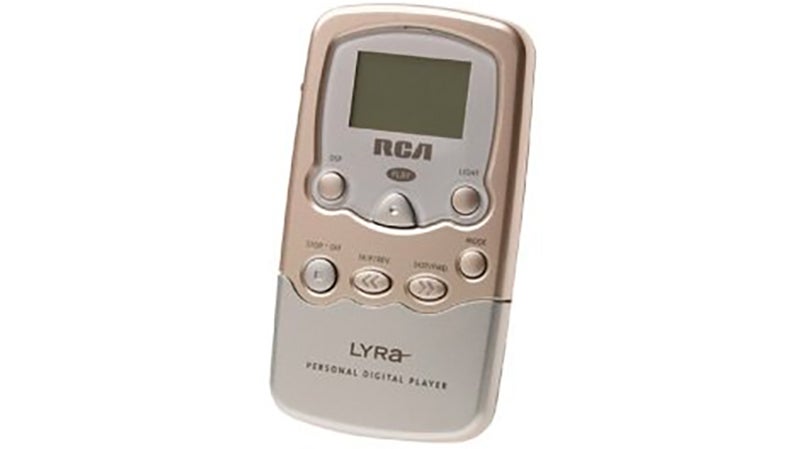
It would be quite a few years before the bigger names in consumer electronics jumped into the portable media player market. The earliest devices came from from smaller brands, although RCA (Thomson Consumer Electronics) arrived at the table early with its 32MB Lyra RD2201. (The Lyra RD2204 came with 64MB of memory.) The device looked like a generic digital voice recorder, but innovated through the use of Compact Flash cards for storing music.
The Lyra was also the first MP3 player with updatable software that could be downloaded from the internet, and in order to keep the RIAA and its complaints of piracy at bay, the Lyra relied on a proprietary card reader and software that converted audio files to encrypted versions as they were copied to the player, preventing them from being easily copied off onto another PC.
Compaq Research Personal Jukebox PJB-100
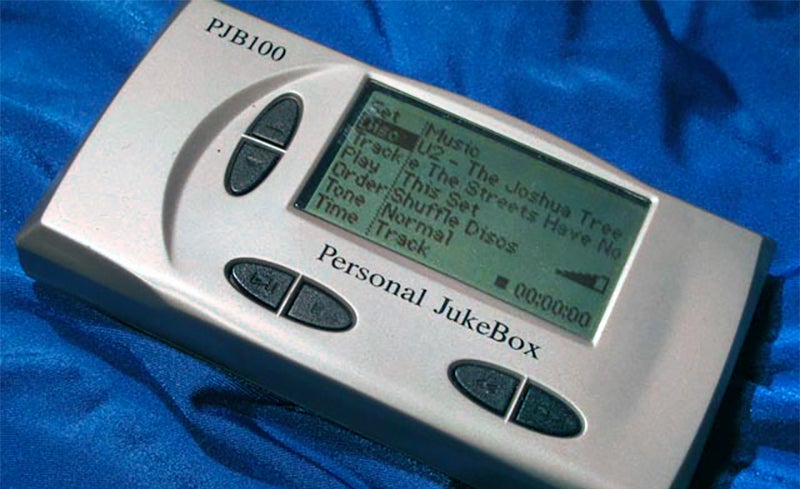
If you’re wondering how music fans survived on just 32MB of storage in an MP3 player in 1998, you’re not alone. Limited capacities were a big issue with the earliest MP3 players, but that would be solved in 1999 when Compaq Research and the Palo Alto Advanced Development group designed and developed the Personal Jukebox PJB-100. This player traded expensive flash memory for a 2.5-inch laptop hard drive with a capacity of 4.86GB.
The PJB-100, licensed to and sold by South Korea’s HanGo Electronics, could hold around 100 CDs worth of music (1,200+ songs) and transferred music from a PC using the newer USB port interface instead of parallel port, which would have taken ages to move across a large MP3 collection. It was by no means a tiny MP3 player, but it featured a generously sized screen for the time, and its rechargeable battery was boosted through 12MB of DRAM, which allowed about 12 minutes of music to be cached so the player’s hard drive could be engaged less often.
Creative Nomad Jukebox

Compared to the Sony Walkman and personal CD players, MP3 players could be built much smaller and were far more portable, but the real appeal of MP3s was being able to bring hundreds of songs with you on the go, and consumers were eager to embrace larger devices that offered gigabytes of storage capacities instead of just megabytes.
If you embraced MP3s a couple of decades ago, you or a friend probably rocked a device like the Creative Nomad Jukebox. When released in late 2000, this player offered 6GB of storage thanks to IBM and Hitachi’s compact flash-sized Microdrives. The Nomad Jukebox was more or less the size of a portable CD player, but eliminated the need to carry a binder full of CDs too.
Intel Pocket Concert
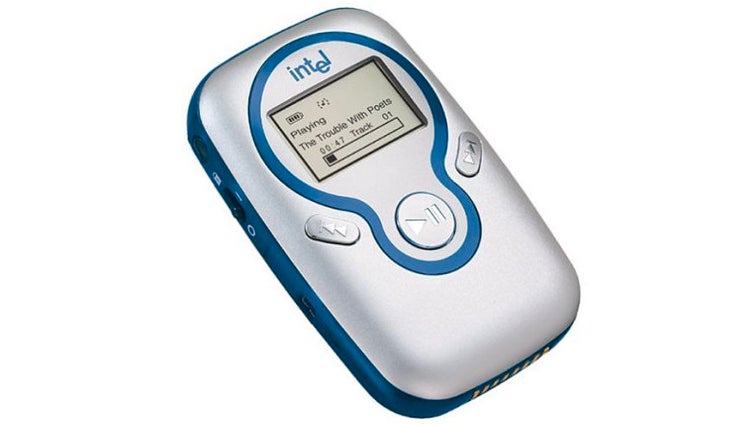
By 2001, storage capacities were increasing, and just like every last company and brand has seemingly released either an electric scooter or a pair of wireless earbuds over the past few years, more big name companies were eager to cash in on the popularity of MP3 players. Intel’s home electronics division released the Pocket Concert in 2001, and the device actually featured a fairly sleek design compared to everything else on the market. At $US300 ($416), it also offered a decent chunk of storage — a whopping 128MB.
Iomega HipZip
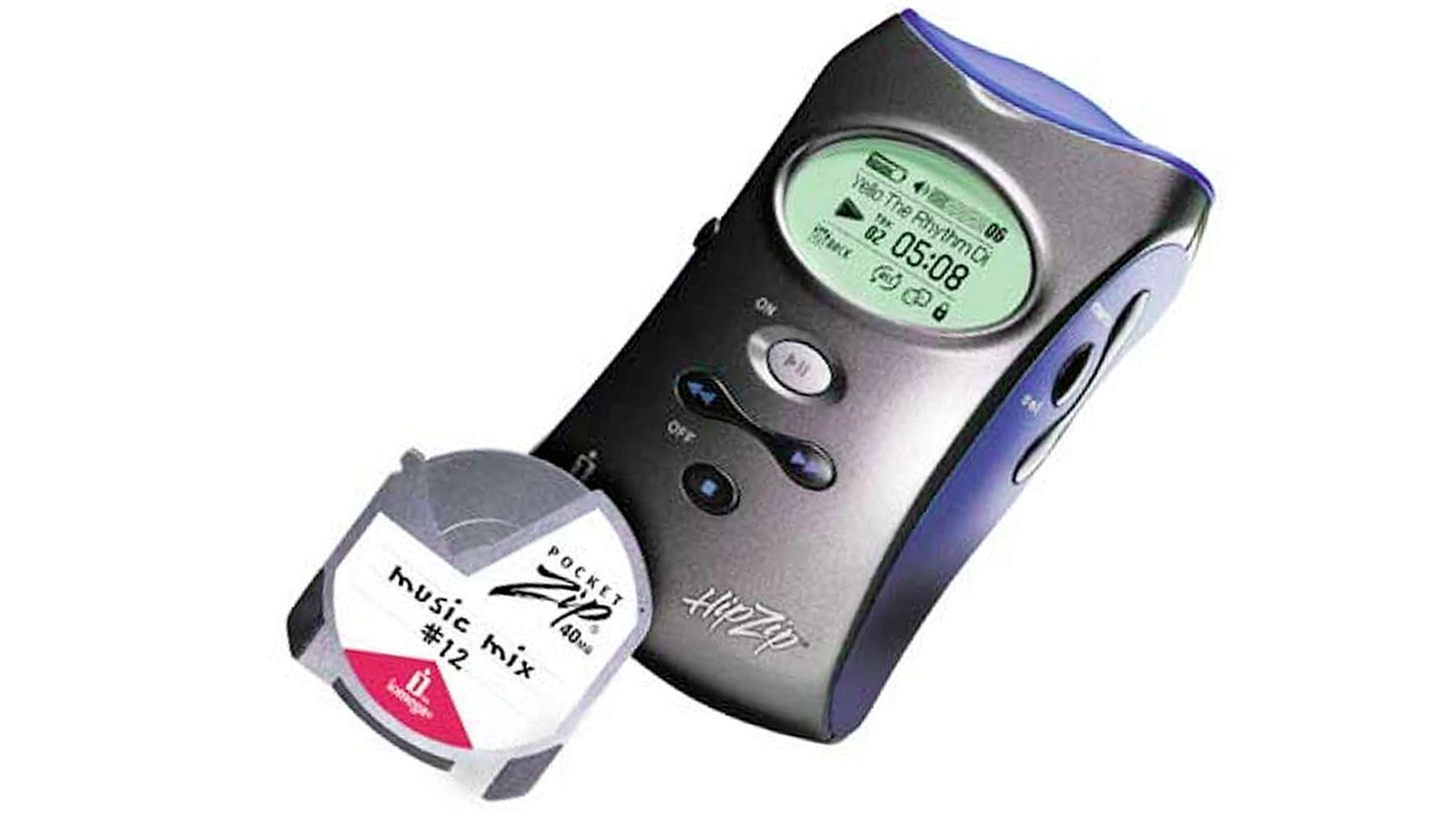
One of the ways companies tried to get around the high price of flash-based memory in the late ‘90s was to use removable media instead, like memory cards. That’s what Iomega did in 2000, but instead of going the Compact Flash route — the most popular memory card format at the time — it chose its own proprietary Pocket Zip disks for its HipZip MP3 player. Each disk held 40MB of music and sold for a very reasonable $US10 ($14), but by that point, Iomega had already made a bad name for itself from the ‘click of death’ issue with its Zip drives, and neither the HipZip nor the Pocket Zip disks were popular with consumers.
Archos Jukebox 6000
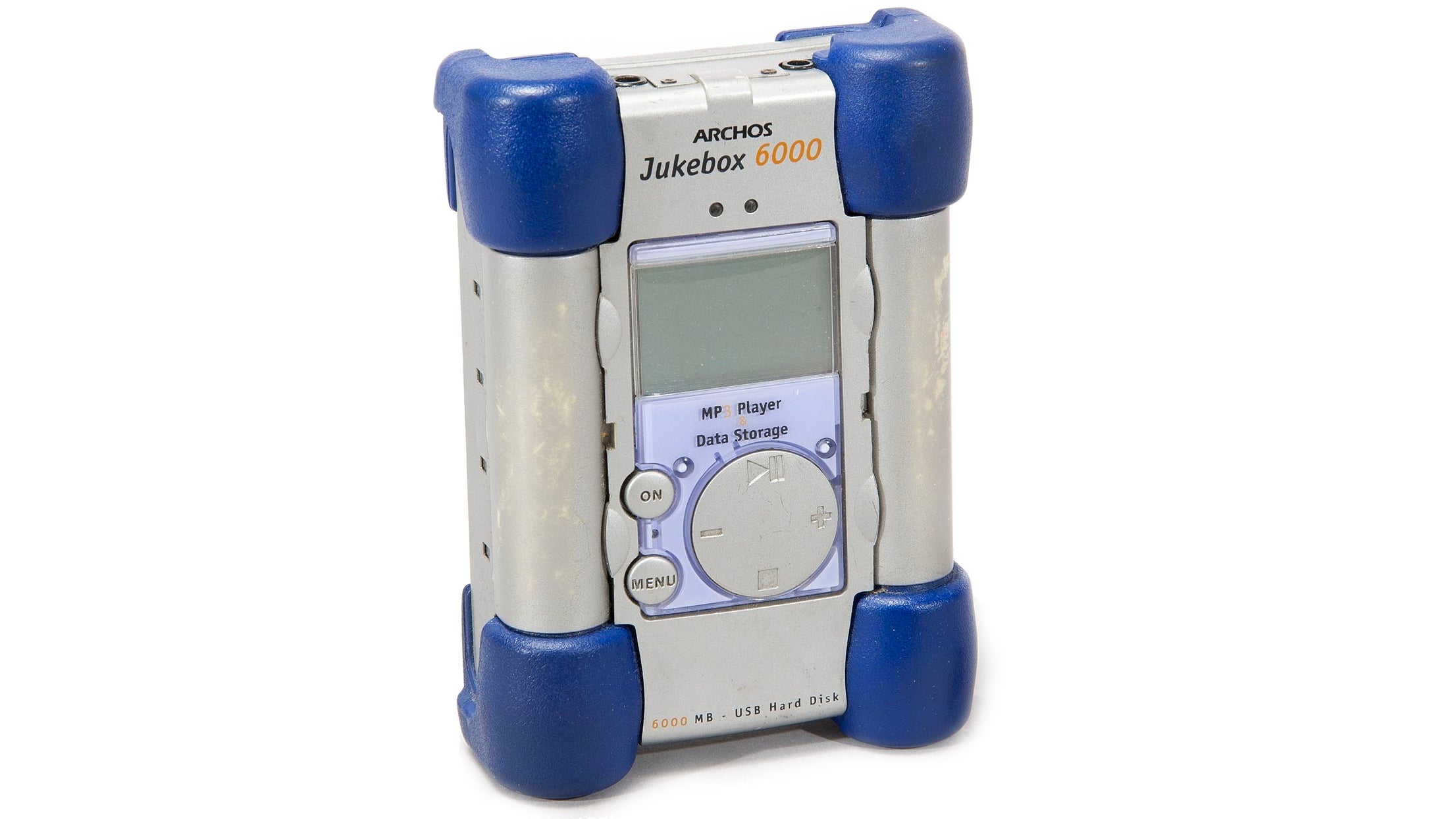
There’s no point in sugar-coating it: some of the earliest hard drive-based MP3 players were downright ugly. The Archos Jukebox 5000 and 6000, which contained 2.5-inch 5GB and 6GB drives inside, respectively, looks unnervingly like a hacked together pipe bomb thanks to the blue foam bumpers on every corner designed to absorb impact and protect the hard drive inside in the event of an accidental drop.
Unlike most MP3 players, which required users to struggle with proprietary software to get their music onto the device, the Jukebox 5000 and 6000 could also just be mounted to a PC with a USB connection like an ordinary external drive, allowing MP3 files to be copied over using Windows’ file explorer. That feature alone potentially justified the cost of this steeply priced option.
Apple iPod
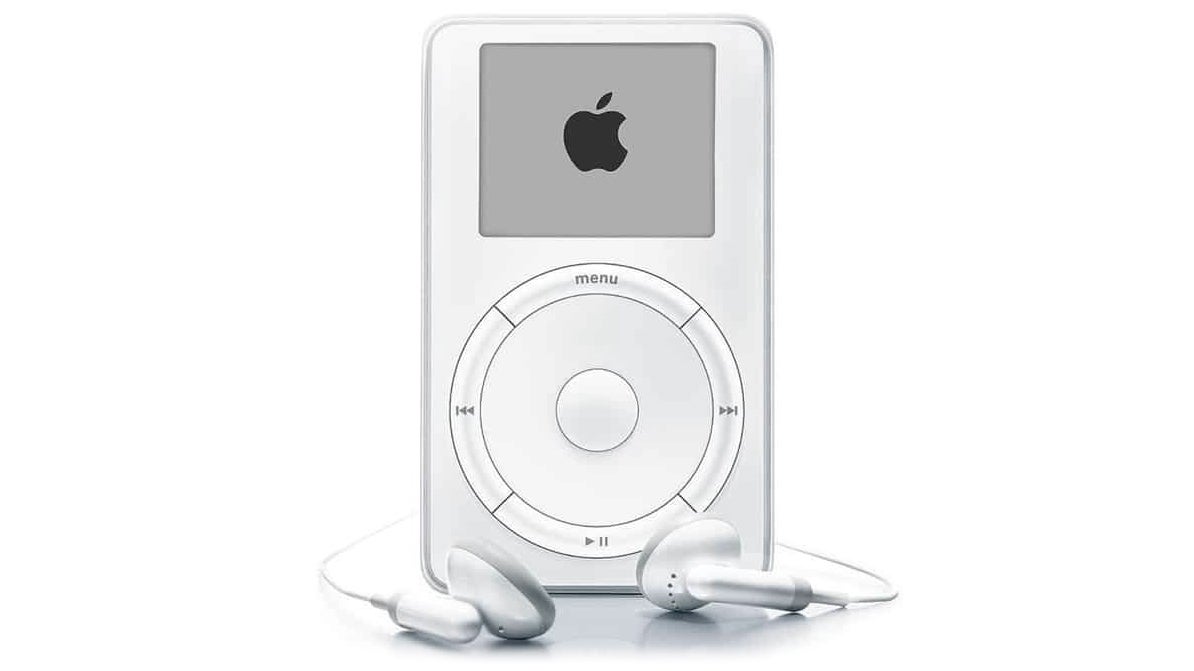
It wasn’t the first, it wasn’t the biggest, and at launch it wasn’t even compatible with Windows PCs, but you can’t take a trip down MP3 player memory lane without mentioning the iPod. Apple had released a handful of non-computer consumer electronic devices before, including a digital camera, but the iPod, engineered by Tony Fadell with a design by Jony Ive, would change the company, and arguably the trajectory of consumer electronics and mobile devices, forever.
It was a lovely piece of technology, with a slick user interface (something all of the competition sorely lacked) that used an elegant scrolling wheel to navigate menu systems and track listings. It didn’t out-spec anything else on the market, but a brought a level of polish not seen before with consumer level devices, and gave birth to the ubiquitous white earbuds still seen all over the place today, but without the wires now.
iRiver iFP-100 Prism
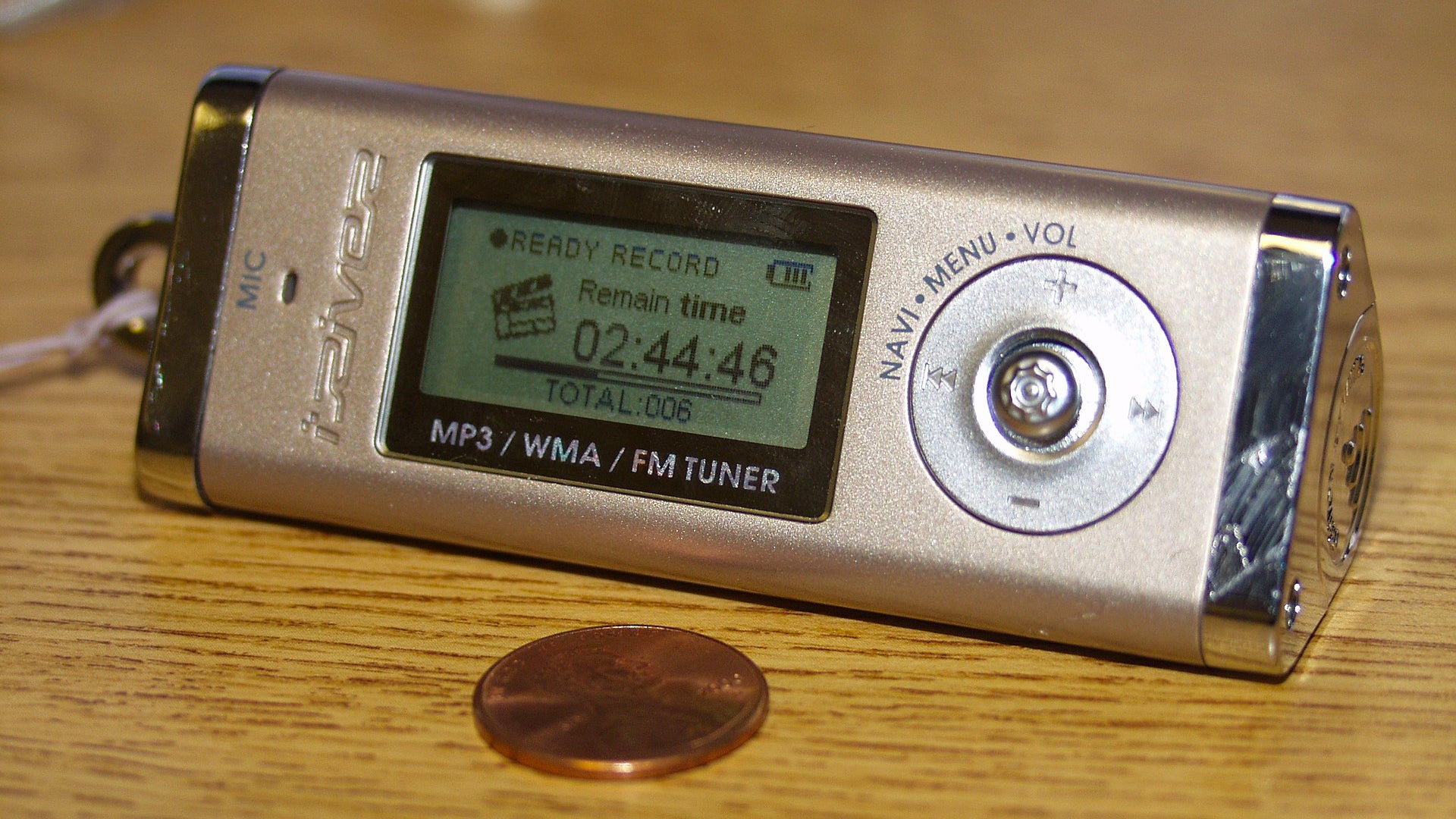
As the popularity of the iPod grew, it further opened the floodgates of MP3 players hitting the market. But the iPod was also a premium-priced product, subject to the famed ‘Apple tax,’ and most users were looking for a much cheaper solution. That allowed iRiver to swoop in with devices like the more affordable and much smaller iFP-100 Prism — so named because of its triangular design — that also included a built-in microphone so it could be used as voice recorder. The strategy worked, and by the end of 2002, the company had claimed almost 20% of the MP3 player market. Its dominance would continue to grow in the coming years.
Casio WMP1
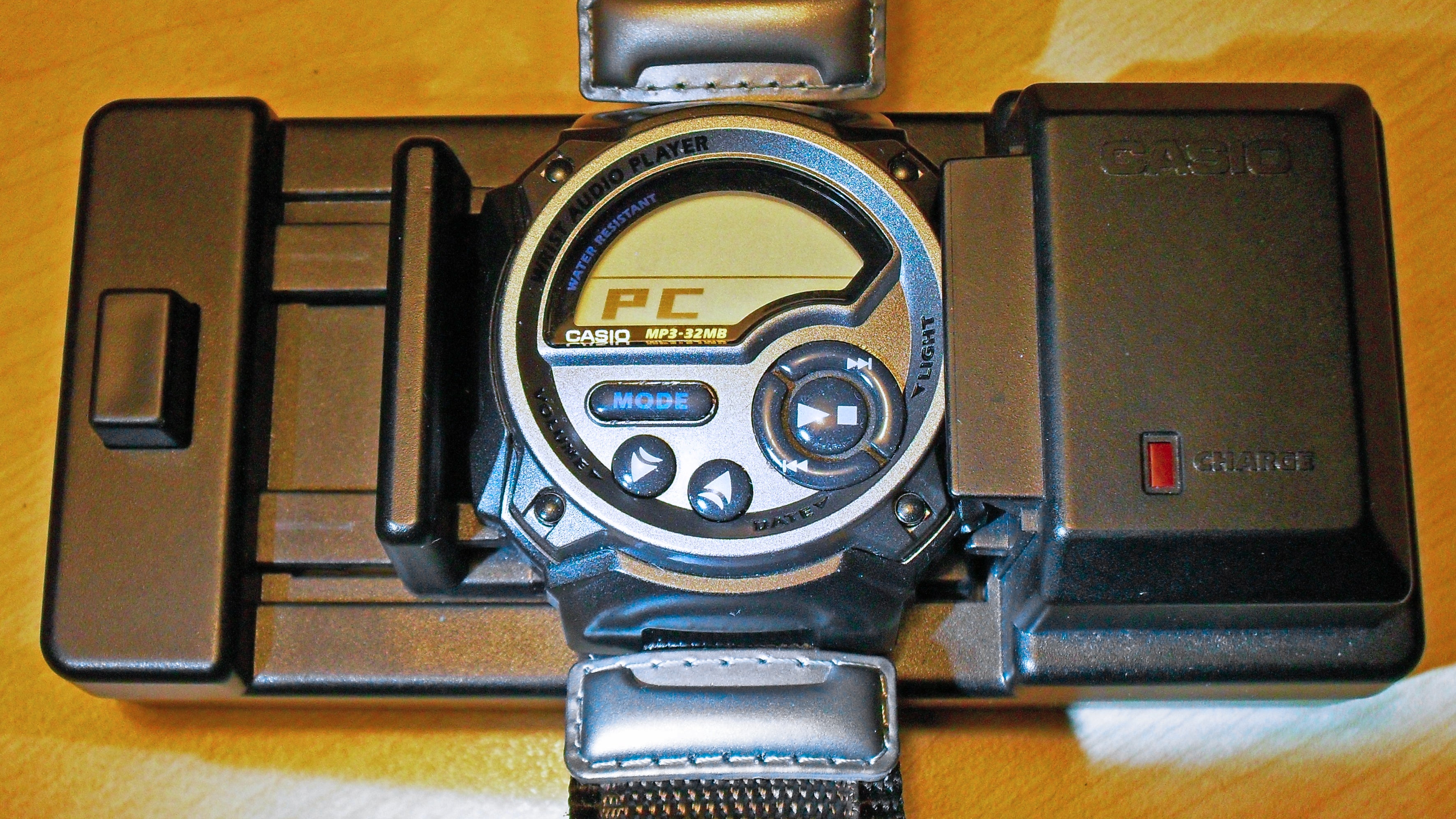
The evolution of MP3 players was startlingly fast, and it didn’t take long at all for weird iterations to arrive. Casio, known for putting everything from calculators to PDAs into its digital watches, realised the best MP3 player is the one you already have with you, and the WMP1 would be literally strapped to your wrist all day long. Copying music files to your smartwatch now is an effortlessly wireless affair, but in the early aughts, it was far more challenging. The WMP1 relied on a proprietary docking station to connect it to a PC, and a separate proprietary adaptor for connecting headphones to it. And with just 32MB of storage onboard, it wouldn’t take long to tire of listening to the same four songs and again.
Creative MuVo TX FM
One of the more functionally useful designs for an MP3 player came from Creative’s MuVo line, which debuted in 2002. The tiny MP3 players were comprised of two parts: a larger section that can hold a AAA battery, and a smaller section with a screen and playback controls that serves as a removable USB flash drive. Even the iPod was saddled with iTunes, which was somehow one of the better media management apps required to use various MP3 players. But with the MuVo, users could simply detach the flash drive section to reveal a standard USB port that could be connected directly to a PC — no drivers needed — for copying over music files and other data files they simply needed to transport.
iPod Shuffle

Although I preferred using PDAs running mobile versions of Windows to listen to music, I owned a couple of models of iPods over the years. Without a doubt, the iPod Shuffle was my absolute favourite. An interesting side effect of carrying hundreds of songs in your pocket was the ability to shuffle through your collection and randomly enjoy tracks without the hassle of creating a playlist.
For me, the iPod Shuffle was a music exploration and discovery tool, serving up tracks from deeper into albums that I otherwise wouldn’t seek out to play deliberately. It was also incredibly small and lightweight — not much bigger than a pack of Juicy Fruit gum — and nearly indestructible, especially compared to my larger iPod that seemed to get scratched by just breathing on it. It was an MP3 player boiled down to its bare essentials, with a cleverly integrated USB port and a streamlined user interface that didn’t need a screen.
